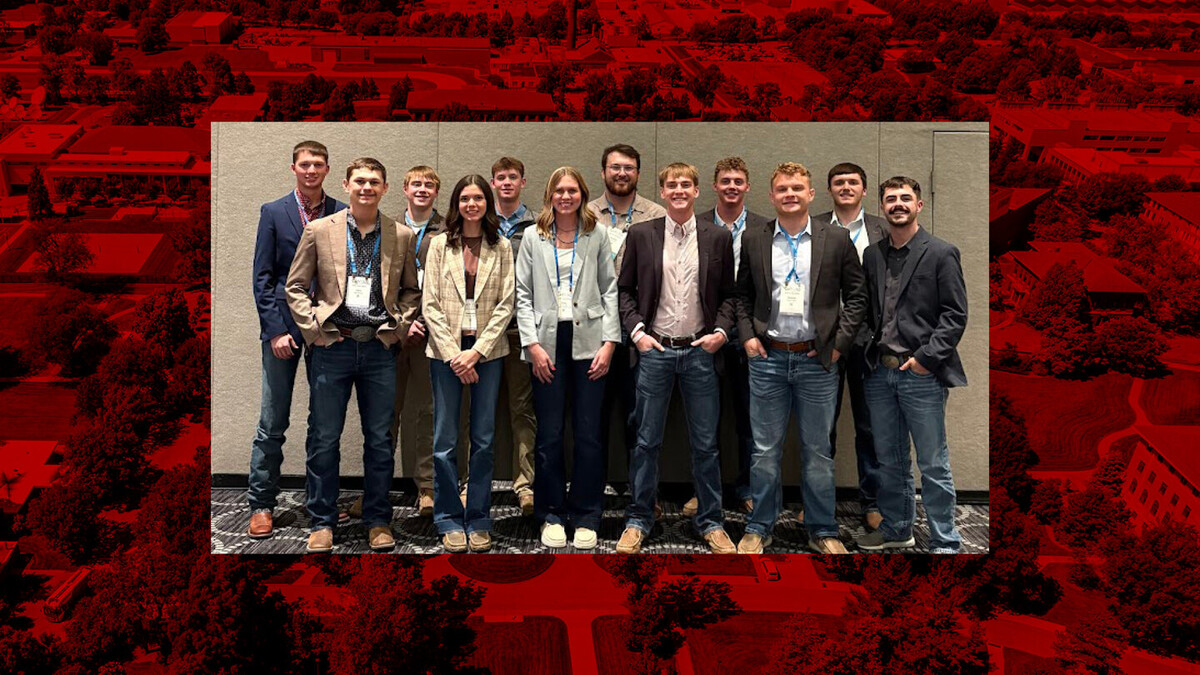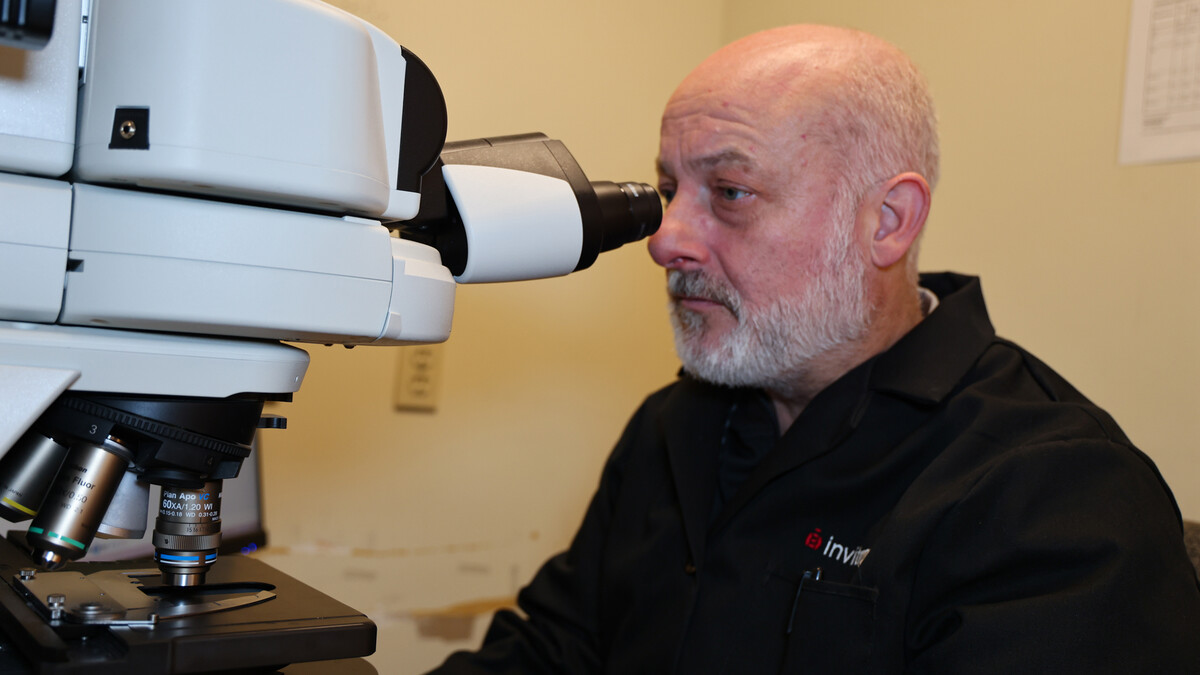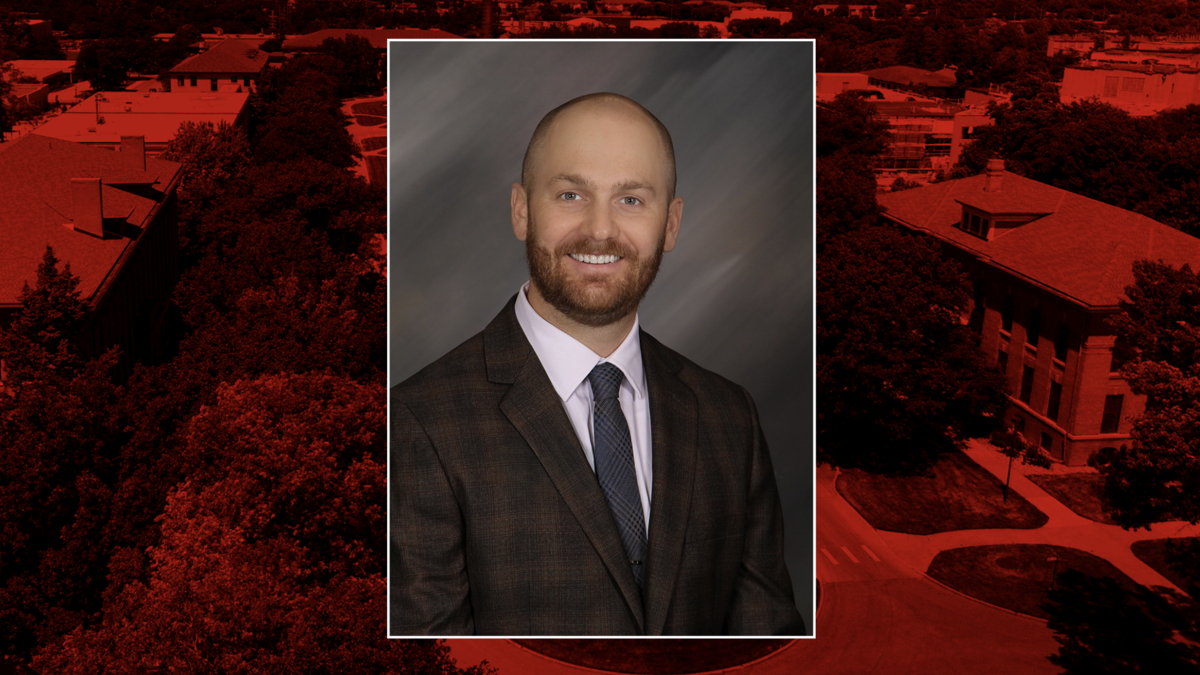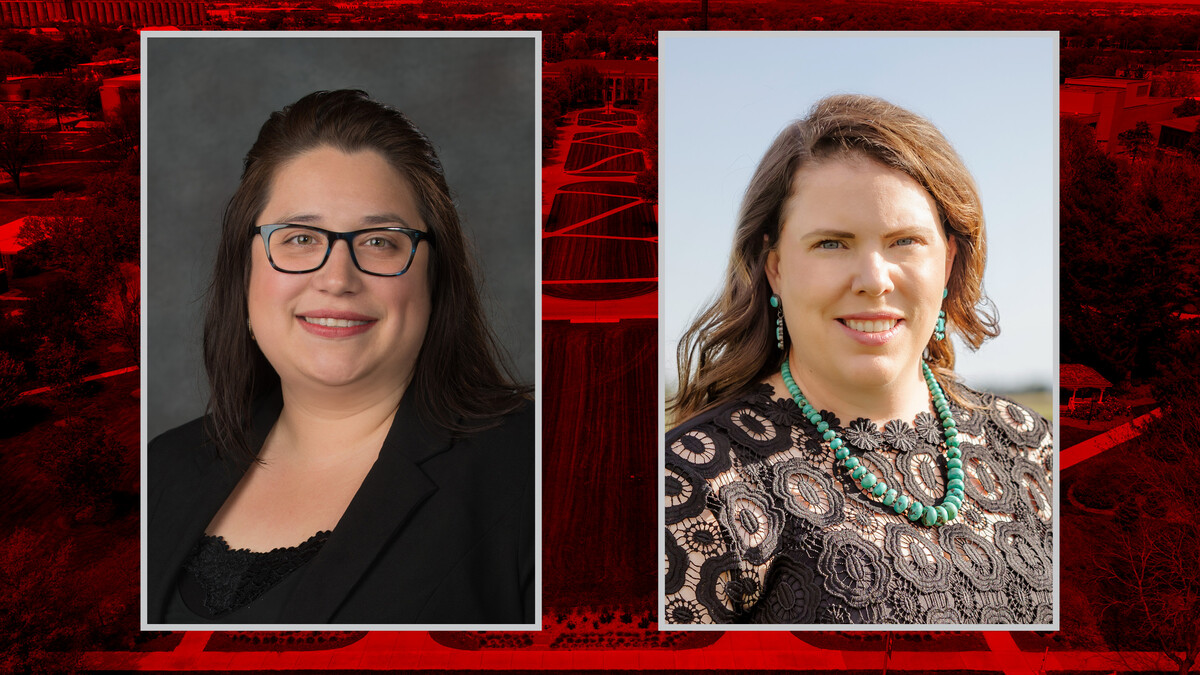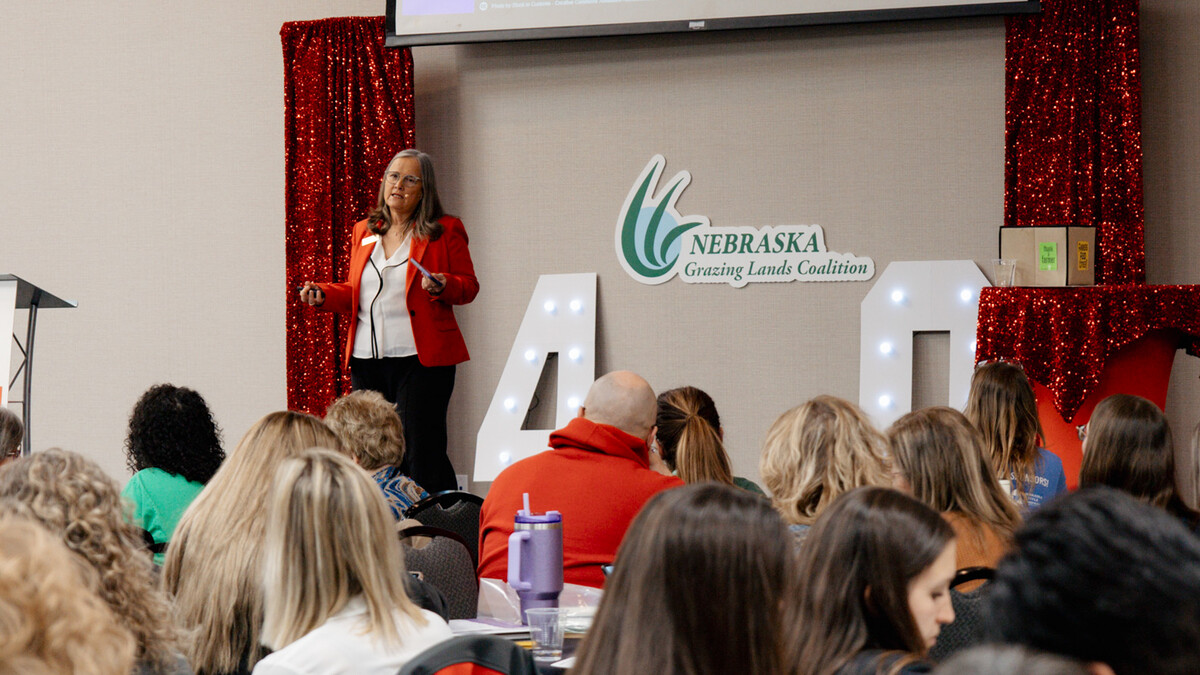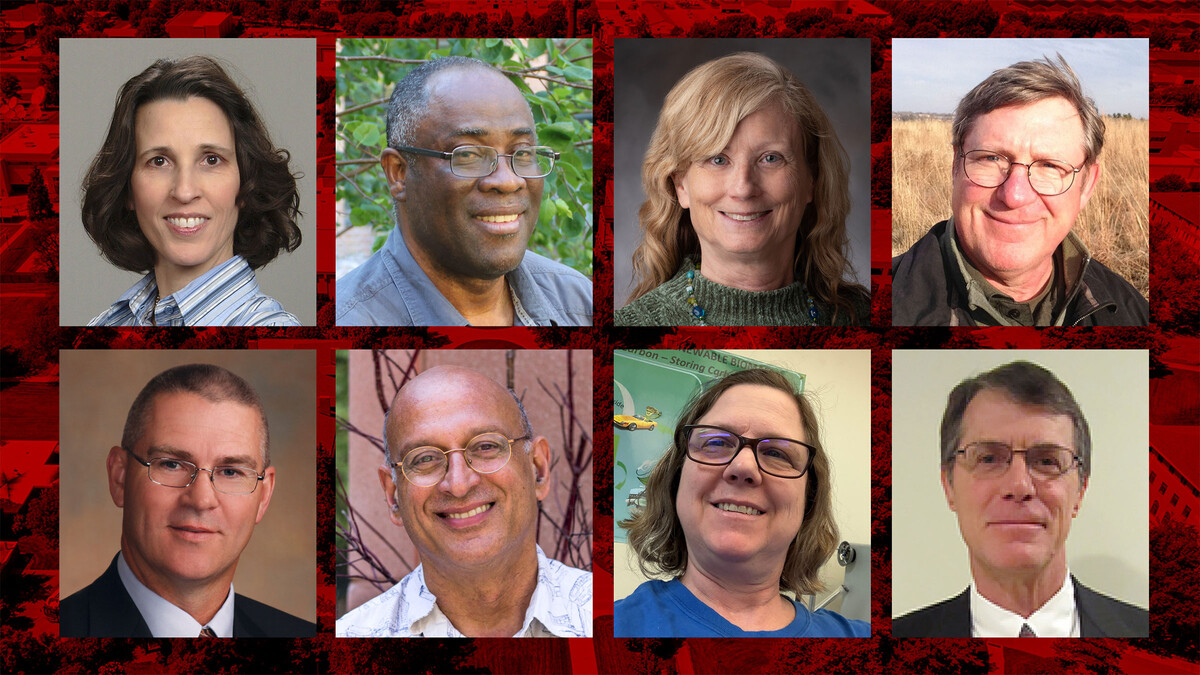
Lincoln, Neb. —Dan Uden stood on the back of a planter, cleaning out soybeans from it, when the life-altering call came on his cell phone. The caller asked if he wanted to go to graduate school. Uden realized he was at a fork in the road (or field, as it was). He could continue pursuing life as a farmer or choose to further his education.
Like the poet Robert Frost, Uden then chose the road less taken (at least for farmers on the backs of planters). He left the farm to earn his master’s and doctorate degrees at Nebraska in 2012 and 2017. He now works as a tenure-track professor in the School of Natural Resources and the Department of Agronomy and Horticulture. The four classes he teaches draw students from both departments.
Uden has street creds with these students. Well, more accurately, he has beef creds, soybean creds and corn creds. He grew up on a soybean and corn farm in Nebraska and researches and teaches how to keep cattle and rangelands resilient.
When people ask where he grew up, he says, “Kenesaw-Prosser-Wood River area,” naming three small towns in south central Nebraska. That’s what you do when you grow up in in-the-middle-of-everywhere Nebraska. Farm creds.
Not that Uden couldn’t give the GPS coordinates for the farm he grew up on. He does, after all, have extensive experience working with land tools such as GPS, remote sensing and geographic information systems. He earned his bachelor's degree at Concordia in Seward, Nebraska, and the work he did there with GIS garnered the graduate school offer and set him on the trajectory to become a resilience spatial scientist.
As a resilience spatial scientist, he researches rangelands through the Center for Resilience in Agricultural Working Landscapes and an EPSCoR project funded at the University of Nebraska-Lincoln and University of Montana-Missoula through the National Science Foundation.
In the center project, he and other scientists are testing the effects of prescribed burns and rotational grazing on four pastures at the Barta Brothers Ranch in the Rose-Bassett-Long Pine area.
He also is working with a doctoral student, Catherine Chan, on comparing vegetation on the ground to high-resolution, hyperspectral imagery collected by an airplane and to data collected by a NASA satellite. They plan to map the different groups of plants on the landscape, producing a tool ranchers and land managers can use.
The project has similarities to the Nebraska-Montana EPSCoR project Uden works on. In that project, he and other scientists use a new technology, resilience informatics, to track vegetation changes on the land, such as from grasslands to woodlands.
Nebraska has one of the largest remaining intact grasslands in the world, but the grasslands are threatened by the spread of redcedars. The loss of the grasslands could have serious ramifications for ranchers and the cattle that graze them, wildlife that live in them, the water supply below them, and so on.
Grasslands are more complicated than what a person who hasn’t grown up around them or studied them might think. For instance, they don’t have just one type of grass but have cool-season grasses and warm-season grasses.
“I like to say that the ecosystem kind of has two legs to stand on,” Uden said. “It could shift to the other group of species to compensate for grazing that happens early in the year. It probably means that your species later in the year will grow a little more vigorously because they won't have to compete with the species that was grazed early on. So, it makes the ecosystem really complex, and it's a lot of the reason why we're doing the experiments we're doing to look at how fire and grazing together can be used to manage trees.”
Since he grew up farming with the Nebraska Sandhills just northwest of him, Uden has knowledge and experience that gives him an edge in this much-needed research. Grassland creds.
He said burning does not kill the grasses because they hold much of their nutrients in their roots and fire removes only the top matter.
So far, he said he and the other researchers have seen that cattle seem to prefer grazing recently burned grasslands.
“That new growth is very nutritious,” he said. “It doesn't have any of that dead plant material from the year before, so they're getting all fresh green growth. It's very efficient for them to eat, instead of trying to pick through and get the green pieces out of a bunch of standing brown stuff from the year before.”
He said researchers will continue to watch the effects of burns over time, especially for any loss of nutrients in Sandhills soil since it’s so sandy to begin with.
On the EPSCoR project, he also is involved with helping the social scientists link the information they have gathered from surveys of ranchers and conservation professionals to the data he and the biophysical scientists gathered through resilience informatics about land changes. He said they are especially interested in seeing if ranchers and conservation professionals have seen more redcedars on their land over the past decades and what they may have done to counteract it.
Uden also teaches for 40 percent of his appointment and advises five students.
“Whatever I can do to equip students and to equip people--whether that's farmers, ranchers or other types of managers--to support them in managing the land, that's really my continuing goal,” he said. “I don't think I'll probably ever be done with it.”
He describes his effort to equip others as being similar to giving them tools like a map, not telling them what to do on the land they manage.
“A map is a tool. How can a map be useful? It's not telling people what to do. It’s just giving them information and tools that they can use to make those decisions,” he said.
He said interesting opportunities like creating useful tools have kept him at the University of Nebraska 13 years, 10 years as a graduate student and now three years as a professor.
“I have never run out of interesting things to study or important challenges to try to contribute to helping resolve,” he said. “And there are always still so many people who do so many things that I'm interested in and I'm still learning about, so I guess the big thing is I've just never stopped learning or finding areas that I hope I can contribute to doing good work in.”
He said he doesn’t foresee himself leaving Nebraska or his professorship anytime soon.
Like the poet Frost, he has chosen the road less taken, and that has made all the difference.
. . . Or maybe not such a big difference.
“A different path would have probably been continuing to farm in some way, and I think I would have been very happy doing that,” he said. “I would have enjoyed it, but I really enjoy the path I'm on now too.”
